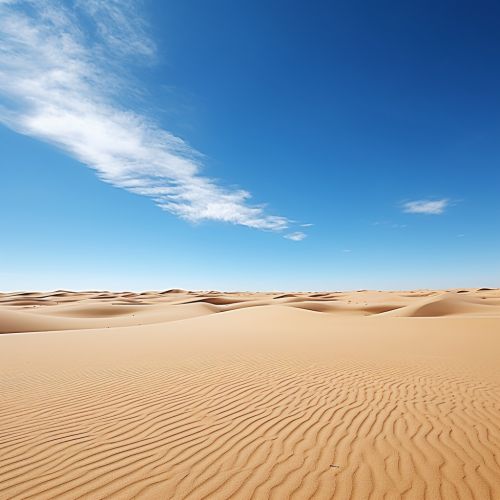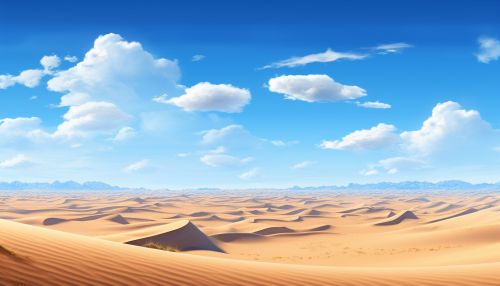Sahara Desert
Geography
The Sahara is the largest hot desert in the world, and the third largest desert overall after Antarctica and the Arctic. It spans across several countries in North Africa, including Algeria, Chad, Egypt, Libya, Mali, Mauritania, Morocco, Niger, Sudan, and Tunisia. The desert covers an area of approximately 9.2 million square kilometers, which is comparable to the size of the United States or China.


Climate
The Sahara's climate is one of the harshest on Earth. The desert is characterized by extremely high temperatures during the day, often exceeding 40 degrees Celsius, and cold temperatures at night, sometimes dropping below freezing. This extreme temperature fluctuation is due to the lack of humidity and cloud cover, which allows for rapid heating during the day and rapid cooling at night. The Sahara also experiences very little rainfall, with some regions going years without any precipitation. This arid climate is a result of the Hadley cell, a large-scale atmospheric circulation pattern in the tropics that produces strong upper-level winds and subsiding air, leading to high pressure and arid conditions.
Flora and Fauna
Despite the harsh conditions, a variety of flora and fauna have adapted to survive in the Sahara. Plant life in the desert is sparse and includes species such as the Acacia tree, the date palm, and various types of cacti. These plants have developed adaptations such as deep root systems and thick, waxy leaves to conserve water.
The Sahara is also home to a number of animal species, including mammals like the Fennec fox, Dromedary camel, and Addax, a type of antelope. These animals have adapted to the desert environment in various ways, such as by being nocturnal to avoid the daytime heat, and having specialized kidneys to conserve water. The Sahara also hosts a variety of bird species, reptiles, and insects.
Human Habitation
Human habitation in the Sahara is limited due to the harsh climate and lack of resources. However, there are several groups of people who have adapted to life in the desert, including the Tuareg people, the Berber people, and the Bedouin. These groups have traditionally lived a nomadic lifestyle, moving from place to place in search of water and grazing land for their livestock.
Economic Resources
Despite its harsh conditions, the Sahara has significant economic resources. The desert is rich in natural resources such as oil, gas, and minerals. Countries like Algeria and Libya have large reserves of oil and gas, while Morocco has significant reserves of phosphates. The Sahara also has potential for renewable energy production, particularly solar energy, due to its high levels of sunlight.
Environmental Issues
The Sahara faces several environmental issues, including desertification, a process where fertile land becomes desert. This is caused by a combination of natural factors, such as climate change, and human activities, such as overgrazing and deforestation. The Sahara is also affected by sandstorms, which can cause damage to infrastructure and pose health risks to people.
